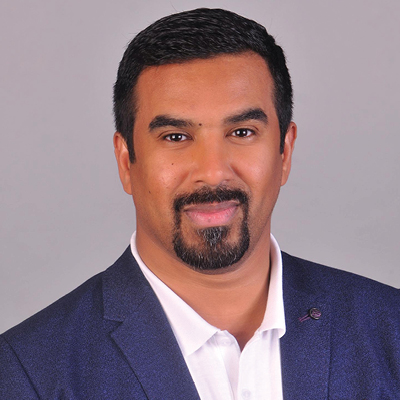
Carney Institute (CI): Tell us about yourself.
Saud Alhusaini (SA): I am originally from Kuwait. I did my medical training at Trinity College Dublin (TCD), Dublin, Ireland and stayed on for a master’s in neuroscience. I’ve always been very intrigued by research and decided to pursue a Ph.D. in neuroimaging at the Royal College of Surgeons in Ireland (RCSI), also in Dublin. After my neurology residency training at the Montreal Neurological Institute (MNI) in Montreal, I completed a combined clinical research Movement Disorders fellowship at Yale School of Medicine and a fellowship in neuro-oncology at Stanford Medical Center. Thereafter, I came to Brown and Rhode Island Hospital (RIH) where I'm currently practicing as a movement disorder specialist.
At RIH, I see patients with movement disorders including Parkinson's disease, essential tremor, other tremor-types, dystonia, and various genetic disorders, like Huntington's disease and spinocerebellar ataxias. I am also interested in movement disorders that occur as a complication of CNS and systemic cancers and their treatment. We have recently established a multidisciplinary clinic called the Normal Pressure Hydrocephalus Clinic which treats those who have an abnormal buildup of cerebrospinal fluid in the brain, causing several neurological symptoms, including gait disturbance, cognitive decline, and urinary symptoms. The clinic is driven by a multidisciplinary clinical team which includes movement disorder neurologists, neurosurgeons, clinical neuropsychologists, and physical therapists. NPH can be treatable but is often mistaken for other neurological conditions and neurodegenerative disorders, such as Alzheimer’s disease.
We’re also hoping to launch a new neurogenetics clinic which would be a formal collaboration between Brown’s Department of Neurology and the medical genetics department at RIH. It’s a very exciting time with many opportunities for clinical collaborations on the horizon.
CI: Can you talk about what it means to be a clinical scientist?
SA: It's a bit of a balancing act. As a clinical scientist, I see patients in the clinic about 50% of the time but am also driving a research career the other half. This research is transitional in nature, so it’s inherently tied to the clinical questions that I’m facing every day. My research is human-based and is focused on neuro-imaging. We’re hoping that our research will reveal mechanisms that will trigger other scientists to identify molecular pathways for the treatment of complex neurological diseases.
CI: Talk about the imaging work that you're doing.
SA: I’m interested in what’s called imaging genomics where we try to understand how genetic risk factors influence the brain and predispose individuals to develop disease. We do this by using brain imaging as a tool to look at many different brain conditions — Parkinson's disease, essential tremor, epilepsy, etc. — to try and tease out the relationship between a disease underlying genetic risk factors and the imaging phenotype.
CI: You’ve been involved in several studies with a large number of co-authors. Can you talk about the process of working with a large cohort of investigators?
SA: Large collaborations are becoming more and more popular in science and medicine. Sometimes these efforts begin with a meeting or conversation at an international conference within a small group of interested scientists. Soon enough, the initial investigators realize that their data sets are too small and underpowered to answer a research question and that larger data sets are needed to achieve statistical power. To meet these needs, consortiums of researchers are then established. What’s nice about these larger collaborations is that they tend to be open access, meaning that you can utilize the entire data from the consortium to answer your own, more granular research questions.
For example, I’m part of the Enigma Consortium within which there are working groups that are focusing on many brain conditions, such as epilepsy, Parkinson's disease, ataxia, and many psychiatric conditions, like schizophrenia and depression. So, what began as a small group of scientists meeting at a conference has now grown into an effort that includes researchers and academic centers across the world.
CI: With respect to movement disorders, are you finding that environmental risk factors play a role in disease pathology?
SA: Absolutely. Most movement disorders are characterized by complex genetics, but there is likely a large environmental component. For example, we know that some environmental factors, such as exposure to certain chemicals and medications, can induce specific movement disorders. Drug-induced Parkinsonism (DIP) is a good example of this.
Not all people exposed to such medications develop Parkinson’s disease-like symptoms, however. Why is that? Are there any markers that would show that an individual has predisposition for these types of conditions? Could a patient have a preexisting brain alteration, even a subtle one that, when exposed to these drugs, results in DIP. These are some of the big questions that we’re wrestling with.
To better understand these dynamics, I'm studying patients with DIP by imaging a specific pathway in the brain called the nigrostriatal pathway, which we know is affected in Parkinson's disease, using different imaging modalities. One of these imaging modalities is the dopamine transporter (DAT) scan. We're hoping to apply other imaging modalities, such as diffusion tensor imaging (DTI) and structural MRI to isolate this specific pathway in DIP patients to study it more.
CI: Are you seeing disease trends in distinct populations?
SA: There are disease risk factors that are very specific to certain populations. So, ethnic background and genetic makeup are definitely playing a role when it comes to some of the conditions that we treat.
CI: We often talk of “silos” academia and medicine getting the way of advancing research and discourse. What’s been your experience at Brown so far?
What’s great about being at Brown is the collaborative community of researchers working on questions like these. I have colleagues who I collaborate with who are also interested in neuroimaging and others who specialize in genetics, advanced data analysis, applied mathematics, and artificial intelligence. These different backgrounds help us find answers, advance research and overcome gaps and disparities that are difficult to overcome working in isolation.